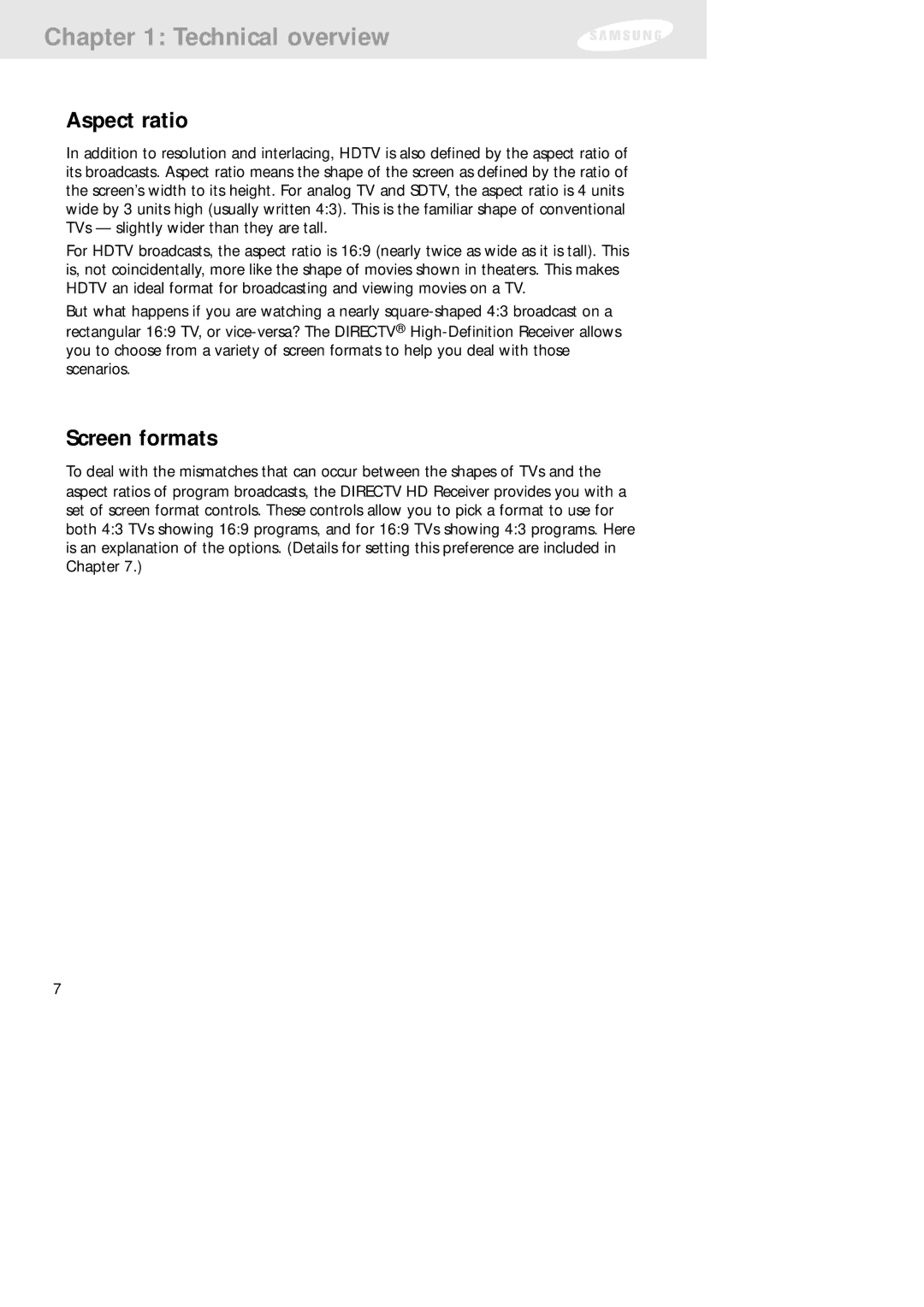
Chapter 1: Technical overview
Aspect ratio
In addition to resolution and interlacing, HDTV is also defined by the aspect ratio of its broadcasts. Aspect ratio means the shape of the screen as defined by the ratio of the screen’s width to its height. For analog TV and SDTV, the aspect ratio is 4 units wide by 3 units high (usually written 4:3). This is the familiar shape of conventional TVs — slightly wider than they are tall.
For HDTV broadcasts, the aspect ratio is 16:9 (nearly twice as wide as it is tall). This is, not coincidentally, more like the shape of movies shown in theaters. This makes HDTV an ideal format for broadcasting and viewing movies on a TV.
But what happens if you are watching a nearly
Screen formats
To deal with the mismatches that can occur between the shapes of TVs and the aspect ratios of program broadcasts, the DIRECTV HD Receiver provides you with a set of screen format controls. These controls allow you to pick a format to use for both 4:3 TVs showing 16:9 programs, and for 16:9 TVs showing 4:3 programs. Here is an explanation of the options. (Details for setting this preference are included in Chapter 7.)
7
